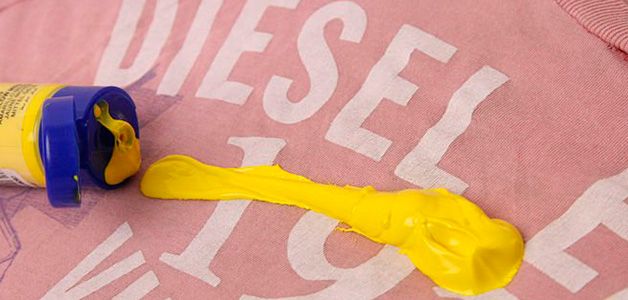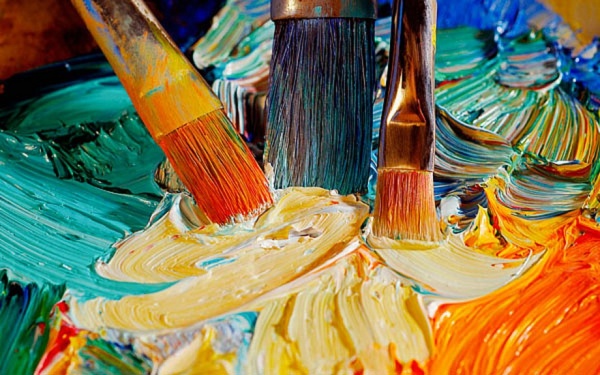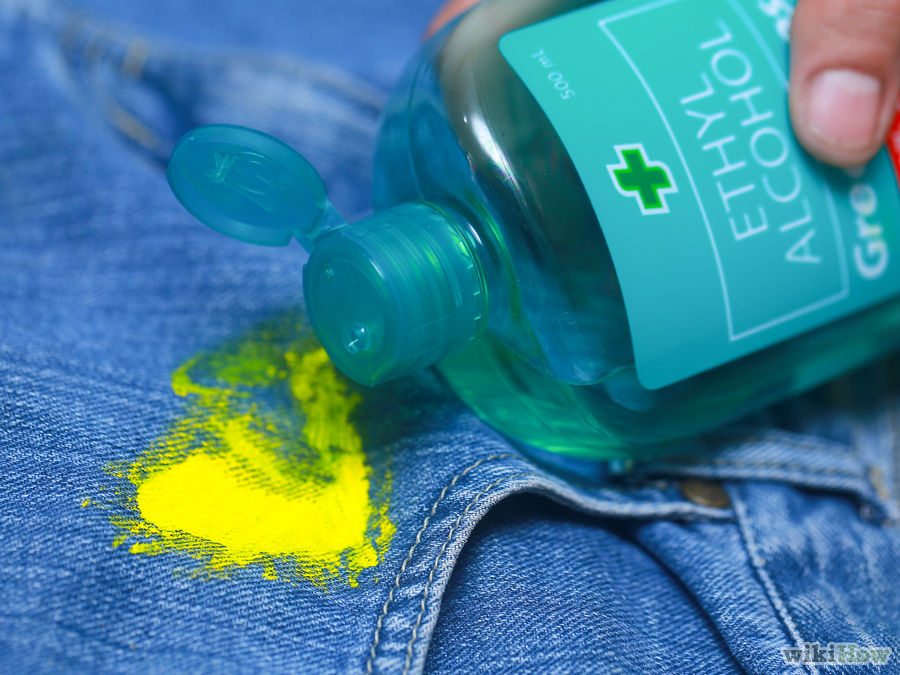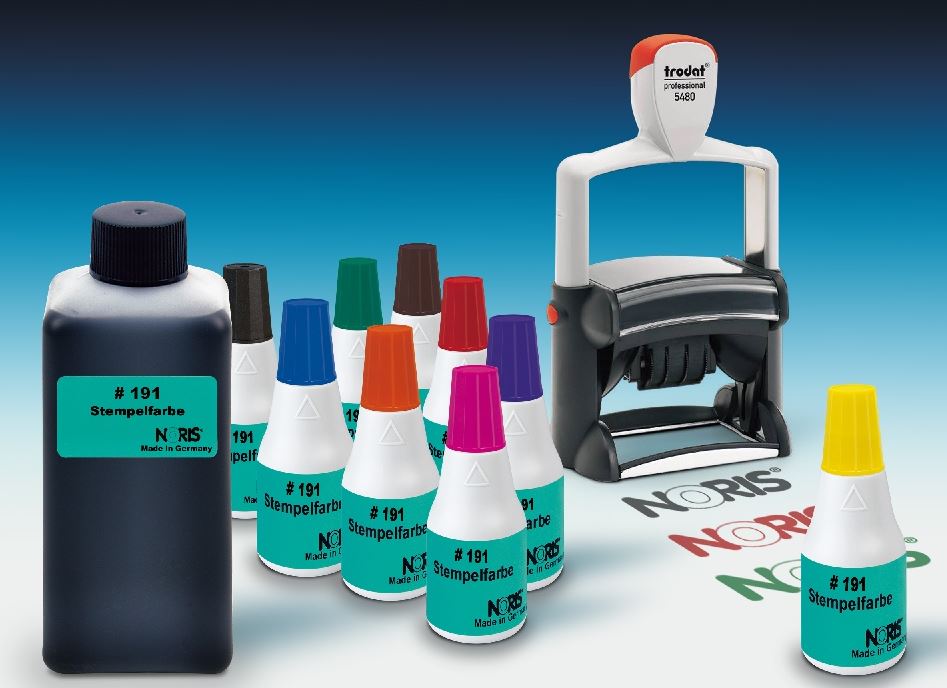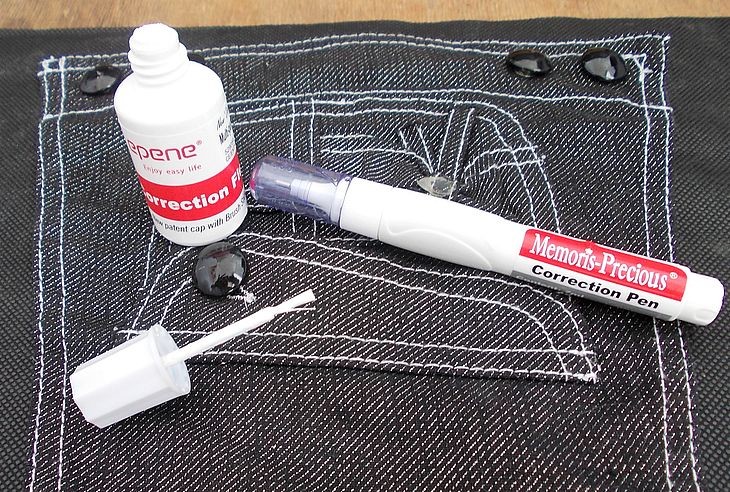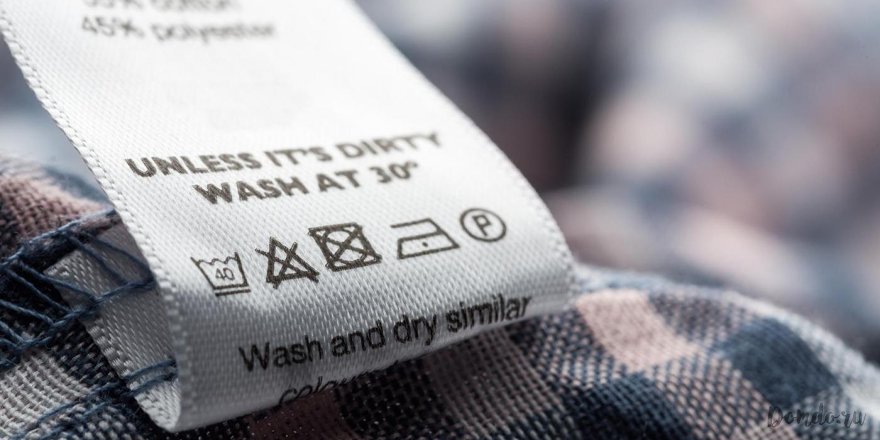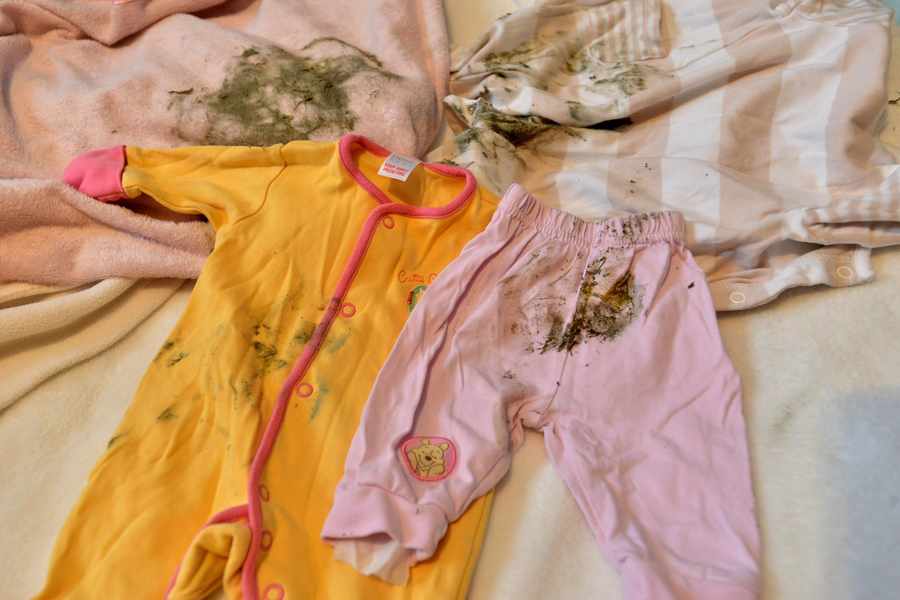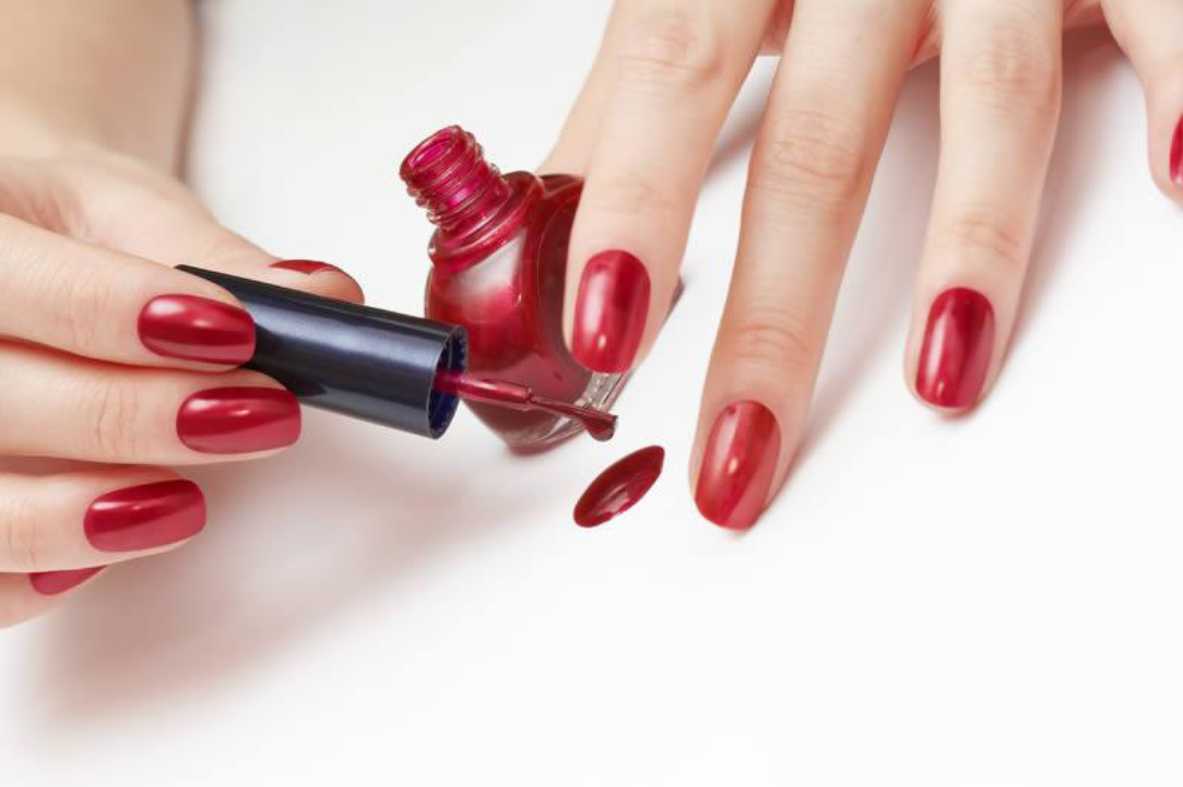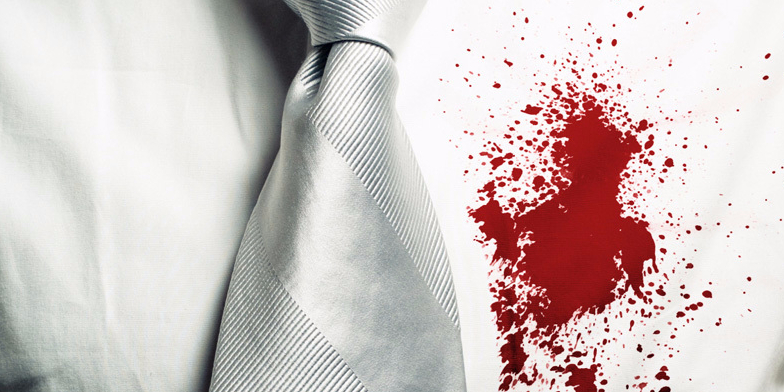No one is immune from stains on clothes. You can dry clean the item or resort to folk remedies. Before you wash paint off clothes, you need to decide on its type.
Methods for removing paint depending on its type
To remove different stains, special means and methods are used. When removing dirt, it is advisable to follow some rules:
- When removing stains, you must not delay, since fresh paint is much easier to remove from fabric;
- Before using the product, test the textile. Apply a few drops of the product to an inconspicuous area of the material (back seam) and leave for 10-15 minutes. If the fabric has not lost its color and its structure has not changed, you can safely use the product;
- Be sure to place a napkin or a piece of thick fabric under the area being treated from the inside so that the paint or solvents do not damage the bottom layer of clothing;
- When rubbing in the solvent, you need to move from the edge of the contaminated area to its center. Thanks to this, the stain will not spread across the material;
- To protect your hands, be sure to wear rubber gloves.
It is easier to remove paint from thick textiles than from thin ones. When cleaning light items, you need to be more careful than when working with jeans.
Oily
Laundry soap is excellent for removing fresh stains. The contaminated area is moistened with warm water, soaped and left to dry for 10-15 minutes. Then the stain is rubbed with a little effort and the entire product is rinsed.
Dense fabrics are easier to clean with solvents (nail polish remover, kerosene, purified gasoline, white spirit). The stain is treated with a cotton pad soaked in the liquid (rubbing movements towards the center of the stain).
A proven folk remedy is vegetable oil, which also removes stains well. Wipe off paint with oily wipes, constantly renewing them. To prevent oil stains from forming on textiles, use dishwashing detergent. Rub the dirty area vigorously, and then wash the entire item in the washing machine.
Watercolor, tempera, gouache
The basis of watercolor paint, gouache is water. If you immediately wash the fabric with laundry soap in cold water, the dirt will almost disappear. It is somewhat more difficult to remove dried watercolor, gouache. The product is soaked in hot water for 10-15 minutes and wrung out. The dirty area is treated with a sponge soaked in hot vinegar. Then the entire product is washed and rinsed.
To clean white clothes, use the following mixture (100 ml of hydrogen peroxide, 100 g of baking soda diluted in 100 ml of water). Cover the contaminated area with the paste and leave for 30-35 minutes. Then rinse the item and dry.
Tempera contains oil components, so it is advisable to use solvents (kerosene, turpentine, purified gasoline) to remove dirt. When preparing tempera paints on your own based on dry pigments, it makes sense to immediately add a little liquid soap, and then the dirt can be easily washed out.
Alkyd water-based
Alkyd paint is made from alkyd varnish and solvents. The best way to remove a stain is to use suitable solvents:
- gasoline, acetone are mixed in equal parts. The contaminated area is wiped with a sponge soaked in the composition. The item is washed in soapy water;
- If the paint layer is thick, use a solution of alcohol, gasoline, turpentine (taken in equal parts). First, gradually soften the paint, then carefully cut it off with a blade or scrape it off with a knife. Wipe off the remaining paint with a cotton pad soaked in the solution.
Water-based paints can have different bases. Stains from water-based paints based on PVA are easily washed off with a soap solution (even without long soaking).
Latex and acrylic
Acrylic paints cannot be removed with just water. To remove stains, use a special mixture (equal parts ammonia, vinegar, a little salt). Soak a sponge in the mixture and rub the stain with force. Rinse the fabric in cool water. If the stain has not completely disappeared, repeat the process 2-3 times.
Synthetic polymer is used to produce modern latex compounds. Latex paint can be removed in the same way as acrylic paint. Very dry dirt is first softened in alcohol, sprinkled with salt, and left for 20-30 minutes. Then wiped with a sponge soaked in alcohol.
For hair
To remove stains, use table vinegar. First, wipe the dirty area with a napkin soaked in undiluted vinegar. Then wash the entire item in the solution (1 tablespoon of vinegar is diluted in a liter of water).
To remove stains from light fabric, use ammonia and hydrogen peroxide. The substances are mixed in equal parts and heated. The composition is applied to the contaminated area. Leave for about 10 minutes and rinse.
Stamp
The paint is created on water, alcohol or oil bases. A fresh stain is removed with boiling water. It is important not to burn your hands. After treating the contaminated area with boiling water, the item is washed with regular powder.
To wash off stamp paint from clothes, use the following mixture (ammonia mixed with turpentine in equal parts). The mixture is poured onto the fabric and left until the stain has completely disappeared. Then the contaminated area is rinsed, and all the clothes are washed in a solution of washing powder.
To clean silk fabrics, use mustard diluted with water. Cover the stain with a thick layer of gruel and leave for 24 hours. Then shake off the dried powder. Rinse the item in cold water and then wash.
How to deal with dried stains
If you can't treat the stain right away, the paint will dry out thoroughly. How can you wash out an old stain? Most often, this is done in several stages.If a thick layer of paint is visible on the surface of the material, it is advisable to cut it off with a knife or blade. To do this, lay the material on a flat, hard surface and firmly fix it with your hand so that the item does not slip. It is not recommended to use cutting objects if the textile is thin, as it can be damaged.
A cotton swab or napkin is moistened with gasoline, oil or other means, depending on the type of stain. The dirty place is carefully wiped - it is necessary to achieve that the stain dissolves. Napkins are changed periodically, otherwise the paint will be absorbed deeper into the material.
The stained area of the clothing is treated with a soda solution. The item is washed in warm soapy water to get rid of the smell of the preparations. If sunflower oil was used, a few drops of dishwashing liquid (Gala, Fairy) should be applied to the cleaned area and the material should be carefully washed again. Then the clothing is rinsed and dried.
Time is the main factor that determines how much effort is required to clean the fabric. The longer a dirty stain remains on the clothes, the more difficult it is to get rid of it.
Video

